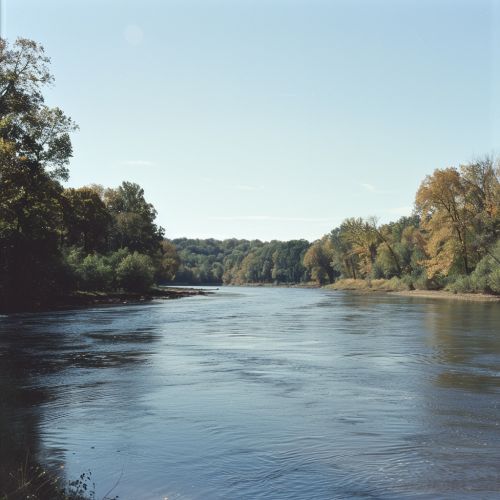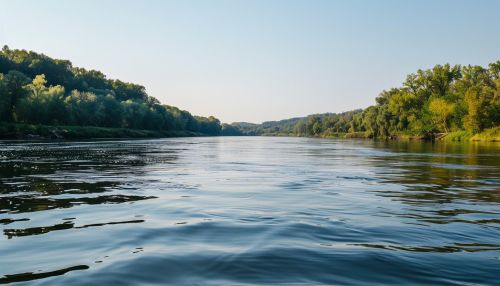Ohio River
Geography
The Ohio River is a significant waterway in the United States, flowing approximately 981 miles (1,579 kilometers) from its origin at the confluence of the Allegheny and Monongahela rivers in Pittsburgh, Pennsylvania, to its confluence with the Mississippi River at Cairo, Illinois. The river serves as a natural boundary for the states of Ohio, Kentucky, and Indiana, and partially for Illinois, West Virginia, and Pennsylvania.


Hydrology
The Ohio River's drainage basin covers an area of 204,000 square miles (529,000 square kilometers), encompassing parts of 14 U.S. states. The river's average flow rate at Cairo, Illinois, is approximately 281,500 cubic feet per second (7,960 cubic meters per second). The river's main tributaries include the Tennessee River, the Cumberland River, and the Wabash River. The Ohio River is part of the Mississippi River watershed, which is the fourth largest drainage basin in the world.
History
The Ohio River has played a significant role in the history of the United States. It was a major transportation route for Native American tribes and later for European settlers. The river was a strategic location during the American Revolutionary War and the American Civil War, with several important battles fought along its banks. In the 19th century, the river was a vital artery for the transport of goods and people during the westward expansion of the United States. The Ohio River also played a crucial role in the Underground Railroad, serving as a boundary between slave and free states.
Economy
The Ohio River is a major artery for commerce in the United States. It supports a variety of industries, including manufacturing, agriculture, and energy production. The river is navigable its entire length, with a series of locks and dams that maintain a minimum depth for commercial traffic. The Ohio River is a significant source of drinking water for millions of people, and its watershed supports a diverse range of wildlife and plant species.
Environmental Concerns
The Ohio River faces several environmental challenges, including pollution from industrial waste, agricultural runoff, and urban stormwater. Efforts to improve the river's water quality are ongoing, led by various governmental and non-governmental organizations. The river's health is critical for the species that depend on it, as well as for the human communities that rely on the river for water, recreation, and livelihoods.
